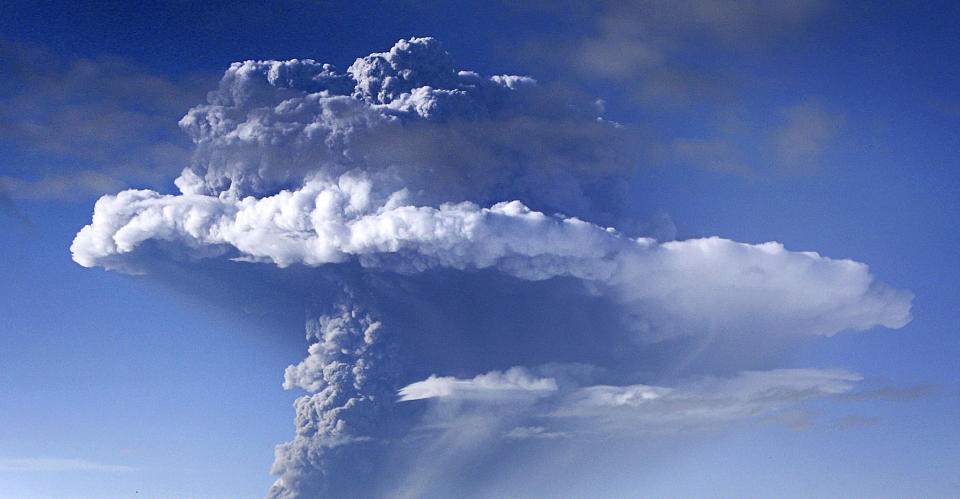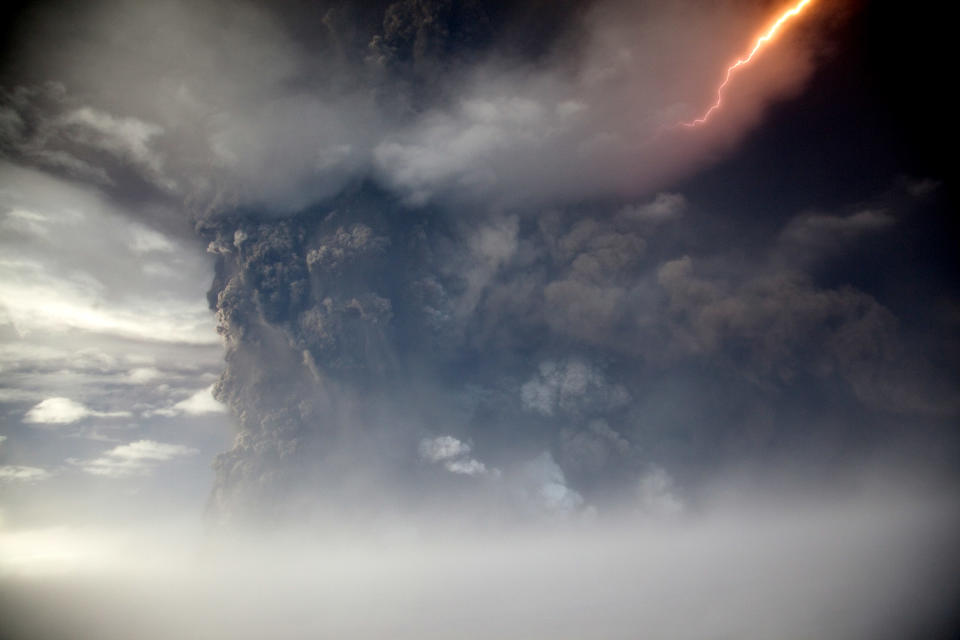Iceland's most active volcano may be about to erupt as scientists record increased seismic activity

Iceland’s most active volcano may be on the verge of erupting after scientists detected increased seismic activity in the area.
The Icelandic Met Office (IMO) said the seismic activity at the Grímsvötn volcano has been increasing during the past month.
The Aviation Colour Code for the volcano was raised to yellow from green on 1 October.
In 2011, Grímsvötn had a major eruption, causing Icelandic airspace to close and 900 flights to be cancelled.
The IMO said raising the Aviation Colour Code did not mean an eruption was imminent, but added: “Multiple datasets now indicate that Grímsvötn volcano has reached a level of unrest.”
They said ground deformation had exceeded the levels seen before the 2011 eruption.
The 2010 Eyjafjallajökull eruption sent a cloud of ash over Europe causing travel chaos that led to around 100,000 flight cancellations.
The air industry which has already been crippled by the COVID-19 pandemic will be fearful of another eruption causing further travel chaos.
Grímsvötn is Iceland’s most active volcano with over 65 recorded eruptions in the past 800 years.
According to scientists, Grímsvötn erupts every five to 10 years on average, with nine years since the last one.
Read more: Astonishing video shows lightning storm inside Taal volcano

Read more: Hawaii volcano creates new land after lava smothers homes and fills ocean bay
It sits beneath a glacier, is almost entirely encased in ice and produces extremely high temperatures, even for a volcano.
The high temperatures have led to the creation of a lake around the volcano but beneath the glacier.
The water can escape when it flows south and has caused landslides and washed away bridges in the past.
If all the water in the subglacial lake drains it can trigger an immediate eruption.
The removal of the water dramatically reduces the pressure around the volcano, triggering an explosion - this has been the cause of eruptions in the past.
Scientists have recently recorded more magma flows in the volcano leading the more ice being melted.
The main force of the explosion would be absorbed by the lake and ice that the volcano sits under, meaning any ash that does escape to the surface is bogged down with moisture.
This should limit the spread of any ash clouds to tens of miles rather than hundreds and cause it to fall out of the air fairly quickly.
Watch: Mesmerising footage of molten lava flowing from volcano and swallowing tin can
The Aviation Colour Code system is an alert system that specifically focuses on the threat of ash clouds caused by volcanic eruptions.
It has four levels, green, yellow, orange and red. Another volcano, Reykjanes, was moved to yellow in January.
The last time it was raised to orange was during the Bárðarbunga 2014-2015 eruption that sent large amounts of sulphur dioxide into the sky but did not affects flights.
The 2010 Eyjafjallajökull eruption was smaller in power compared to the 2011 Grímsvötn eruption but sent much more ash into the sky.
The ash clouds caused by the Eyjafjallajökull eruption led to air travel chaos for six days in April 2010 and again in May.
The total losses suffered by the airline industry as a result of the explosion was estimated to be around £1.1bn.

 Yahoo News
Yahoo News 